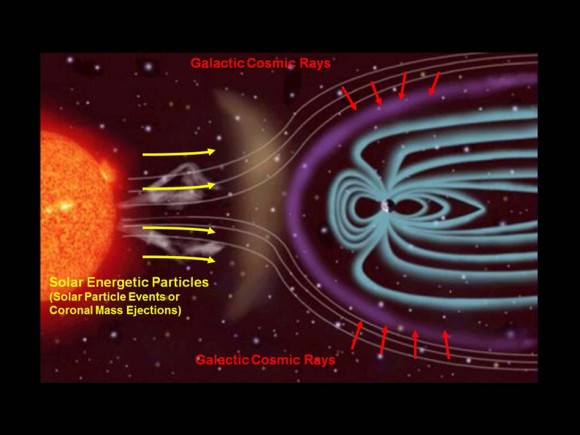Long term space exploration comes with many challenges. Not least is how much toilet paper to take but more worryingly is the impact on human physiology. We have not evolved in a weightless environment, we are not used to floating around for months on end nor are we able to cope with increased levels of radiation. It is likely that organs like the kidneys will become damaged but it make take time for signs to appear. Researchers are developing ways to detect organ issues in the early stages and develop ways to protect them during long duration flights.
Continue reading “An Astronaut Might Need Kidney Dialysis on the Way Home from Mars”A Human Mission to Mars Should Last a Maximum of 4 Years
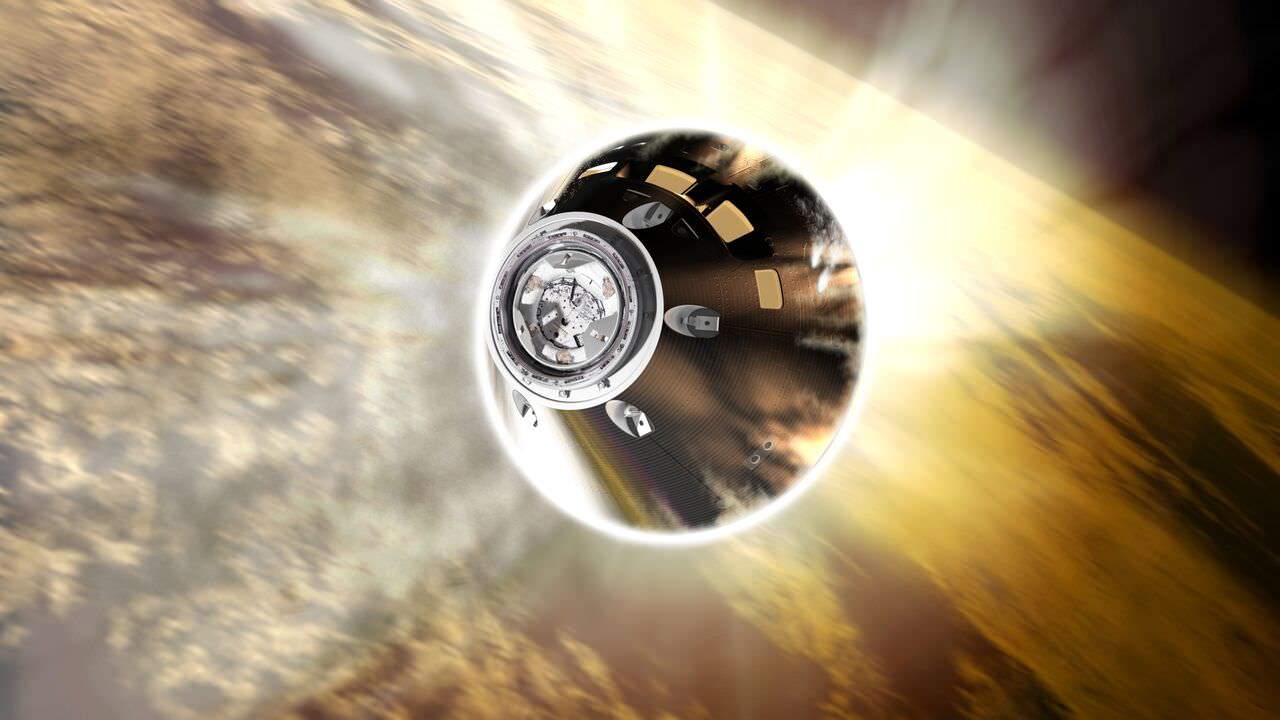
At one time, the idea of sending humans to Mars either seemed like a distant prospect or something out of science fiction. But with multiple space agencies and even commercial space companies planning to mount missions in the coming decade, the day when humans will go to Mars is fast approaching the point of realization. Before this can happen, several issues need to be resolved first, including a myriad of technical and human factors.
In any discussion about crewed missions to Mars, there are recurring questions about whether or not we can mitigate the threat of radiation. In a new study, an international team of space scientists addressed the question of whether particle radiation would be too great a threat and if radiation could be mitigating through careful timing. In the end, they found that a mission to Mars is doable but that it could not exceed a duration of four years.
Continue reading “A Human Mission to Mars Should Last a Maximum of 4 Years”NASA Undeterred by the Threat of Space Radiation

When it comes to planning missions to Mars and other distant locations in the Solar System, the threat posed by radiation has become something of an elephant in the room. Whether it is NASA’s proposed “Journey to Mars“, SpaceX’s plans to conduct regular flights to Mars, or any other plan to send crewed missions beyond Low Earth Orbit (LEO), long-term exposure to space radiation and the health risks this poses is an undeniable problem.
But as the old saying goes, “for every problem, there is a solution”; not to mention, “necessity is the mother of invention”. And as representatives from NASA’s Human Research Program recently indicated, the challenge posed by space radiation will not deter the agency from its exploration goals. Between radiation shielding and efforts aimed at mitigation, NASA plans to proceed with mission to Mars and beyond.
Since the beginning of the Space Age, scientists have understood how beyond Earth’s magnetic field, space is permeated by radiation. This includes Galactic Cosmic Rays (GCRs), Solar Particle Events (SPEs) and the Van Allen Radiation Belts, which contains trapped space radiation. Much has also been learned through the ISS, which continues to provide opportunities to study the effects of exposure to space radiation and microgravity.
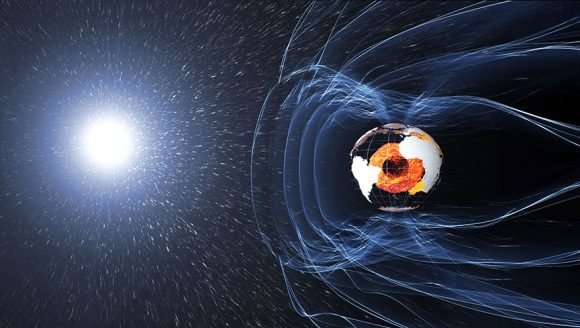
For instance, though it orbits within Earth’s magnetic field, astronauts receive over ten times the amount of radiation than people experience on average here on Earth. NASA is able to protect crews from SPEs by advising them to seek shelter in more heavily shielded areas of the station – such as the Russian-built Zvezda service module or the US-built Destiny laboratory.
However, GCRs are more of a challenge. These energetic particles, which are primarily composed of high-energy protons and atomic nuclei, can come from anywhere within our galaxy and are capable of penetrating even metal. To make matters worse, when these particles cut through material, they generate a cascade reaction of particles, sending neutrons, protons and other particles in all directions.
This “secondary radiation” can sometimes be a greater risk than the GCRs themselves. And recent studies have indicated that the threat they pose to living tissue can also have a cascading effect, where damage to one cell can then spread to others. As Dr. Lisa Simonsen, a Space Radiation Element Scientist with NASA’s HRP, explained:
“One of the most challenging parts for the human journey to Mars is the risk of radiation exposure and the inflight and long-term health consequences of the exposure. This ionizing radiation travels through living tissues, depositing energy that causes structural damage to DNA and alters many cellular processes.”
To address this risk, NASA is currently evaluating various materials and concepts to shield crews from GCRs. These materials will become an integral part of future deep-space missions. Experiments involving these materials and their incorporation into transport vehicles, habitats and space suits are currently taking place at the NASA Space Radiation Laboratory (NSRL).
At the same time, NASA is also investigating pharmaceutical countermeasures, which could prove to be more effective than radiation shielding. For instance, potassium iodide, diethylenetriamine pentaacietic acid (DTPA) and the dye known as “Prussian blue” have been used for decades to treat radiation sickness. During long-term missions, astronauts will likely need to take daily doses of radiation meds to mitigate exposure to radiation.
Space radiation detection and mitigation technologies are also being developed through NASA’s Advanced Exploration Systems Division. These include the Hybrid Electronic Radiation Assessor for the Orion spacecraft, and a series of personal and operational dosimeters for the ISS. There are also existing instruments which are expected to play an important role when crewed mission to Mars begin.
Who can forget the Radiation Assessment Detector (RAD), which was one of the first instruments sent to Mars for the specific purpose of informing future human exploration efforts. This instrument is responsible for identifying and measuring radiation on the Martian surface, be it radiation from space or secondary radiation produced by cosmic rays interacting with the Martian atmosphere and surface.
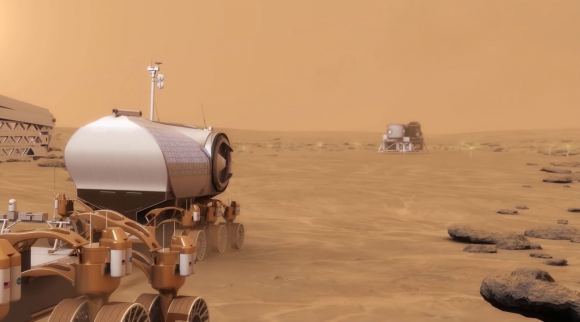
Because of these and other preparations, many at NASA are naturally hopeful that the risks of space radiation can and will be addressed. As Pat Troutman, the NASA Human Exploration Strategic Analysis Lead, stated in a recent NASA press statement:
“Some people think that radiation will keep NASA from sending people to Mars, but that’s not the current situation. When we add the various mitigation techniques up, we are optimistic it will lead to a successful Mars mission with a healthy crew that will live a very long and productive life after they return to Earth.
Scientists are also engaged in ongoing studies of space weather in order to develop better forecasting tools and countermeasures. Last, but not least, multiple organizations are looking to develop smaller, faster spacecraft in order to reduce travel times (and hence, exposure to radiation). Taken together, all of these strategies are necessary for long-duration spaceflights to Mars and other locations throughout the Solar System.
Granted, there is still considerable research that needs to be done before we can say with any certainty that crewed missions to Mars and beyond will be safe, or at least not pose any unmanageable risks. But the fact that NASA is busy addressing these needs from multiple angles demonstrates how committed they are to seeing such a mission happen in the coming decades.
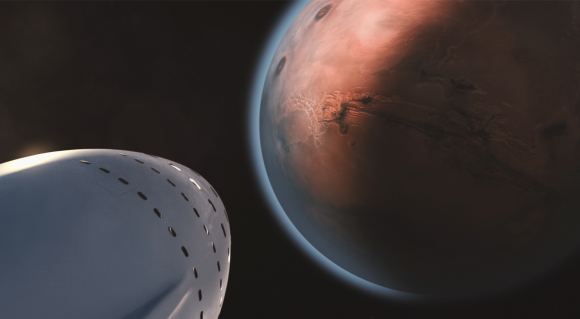
“Mars is the best option we have right now for expanding long-term, human presence,” said Troutman. “We’ve already found valuable resources for sustaining humans, such as water ice just below the surface and past geological and climate evidence that Mars at one time had conditions suitable for life. What we learn about Mars will tell us more about Earth’s past and future and may help answer whether life exists beyond our planet.”
Beyond NASA, Roscosmos, the Chinese National Space Agency (CSNA) have also expressed interest in conducting crewed mission to the Red Planet, possibly between the 2040s or as late as the 2060s. While the European Space Agency (ESA) has no active plans for sending astronauts to Mars, they see the establishment of an International Lunar Village as a major step towards that goal.
Beyond the public sector, companies like SpaceX and non-profits like MarsOne are also investigating possible strategies for protecting and mitigating against space radiation. Elon Musk has been quite vocal (especially of late) about his plans to conduct regular trips to Mars in the near future using the Interplanetary Transport System (ITS) – also known as the BFR – not to mention establishing a colony on the planet.
And Baas Landsdorp has indicated that the organization he founded to establish a human presence on Mars will find ways to address the threat posed by radiation, regardless of what a certain report from MIT says! Regardless of the challenges, there is simply no shortage of people who want to see humanity go to Mars, and possibly even stay there!
And be sure to check out this video about the Human Research Program, courtesy of NASA:
Further Reading: NASA
Human Voyages to Mars Pose Higher Cancer Risks
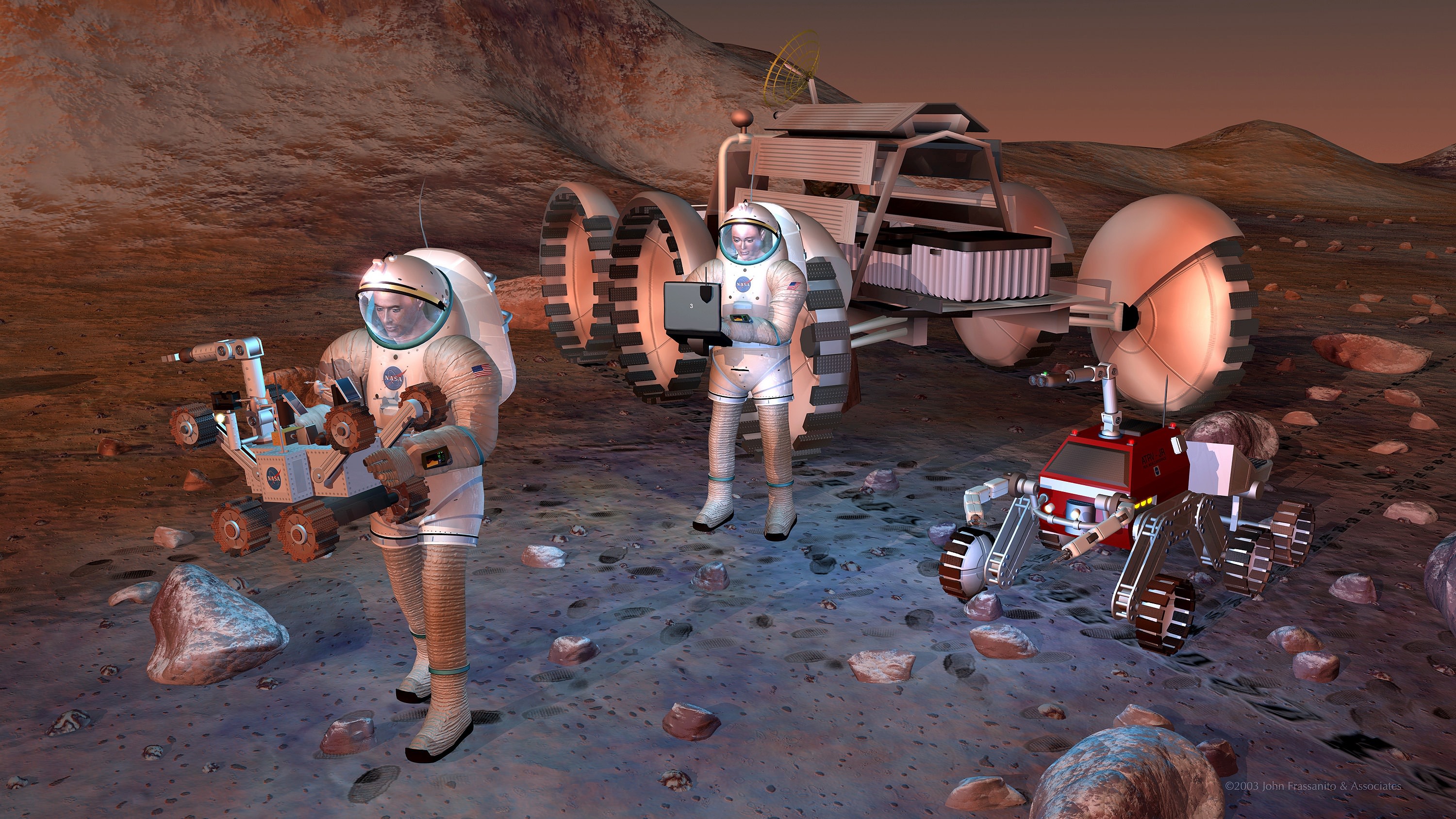
New measurements of the energetic space radiation environment present in interplanetary space taken by NASA’s Curiosity rover confirm what has long been suspected – that lengthy years long voyages by astronauts to deep space destinations like Mars will expose the crews to high levels of radiation that – left unchecked – would be harmful to their health and increase their chances of developing fatal cancers.
Although the data confirm what scientists had suspected, it’s equally important to state that the space radiation data are not ‘show stoppers” for human deep space voyages to the Red Planet and other destinations because there are a multitude of counter measures- like increased shielding and more powerful propulsion – that NASA and the world’s space agencies can and must implement to reduce and mitigate the dangerous health effects of radiation on human travelers.
The new radiation data was released at a NASA media briefing on May 30 and published in the journal Science on May 31.
Indeed the new measurements collected by Curiosity’s Radiation Assessment Detector (RAD) instrument during her 253-day, 560-million- kilometer journey enroute to the Red Planet in 2011 and 2012 will provide important insights to allow NASA to start designing systems for safely conducting future human missions to Mars.
“NASA wants to send astronauts to Mars in the 2030’s,” Chris Moore, NASA’s deputy director of Advanced Exploration Systems NASA HQ, said to reporters at the media briefing.
“The Human Spaceflight and Planetary Science Divisions at NASA are working together to get the data needed for human astronauts. RAD is perfect to collect the data for that,” said Moore.
The RAD data indicate that astronauts would be exposed to radiation levels that would exceed the career limit levels set by NASA during a more than year long voyage to Mars and back using current propulsion systems, said Eddie Semones, spaceflight radiation health officer at the Johnson Space Center.
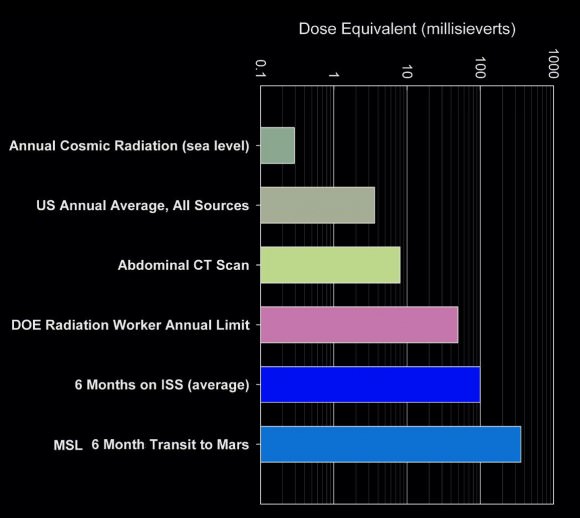
NASA’s Humans to Mars planning follows initiatives outlined by President Obama.
“As this nation strives to reach an asteroid and Mars in our lifetimes, we’re working to solve every puzzle nature poses to keep astronauts safe so they can explore the unknown and return home,” said William Gerstenmaier, NASA’s associate administrator for human exploration and operations in Washington, in a statement.
The International Space Station already in low Earth orbit and the Orion crew capsule under development will serve as very useful platforms to conduct real life experiments on resolving the health risks posed by long term exposure to space radiation.
“We learn more about the human body’s ability to adapt to space every day aboard the International Space Station, said Gerstenmaier. “As we build the Orion spacecraft and Space Launch System rocket to carry and shelter us in deep space, we’ll continue to make the advances we need in life sciences to reduce risks for our explorers. Curiosity’s RAD instrument is giving us critical data we need so that we humans, like the rover, can dare mighty things to reach the Red Planet.”
RAD was the first instrument to collect radiation measurements during the cruise phase to the Red Planet. It is mounted on the top deck of the Curiosity rover.
“Although RAD’s objective is to characterize the radiation environment on the surface of Mars, it’s also good for the cruise phase,” Don Hassler, RAD Principal Investigator at the Southwest Research Institute (SWRI) told reporters.
“Since Orion and MSL are similar sized RAD is ideal for collecting the data.”
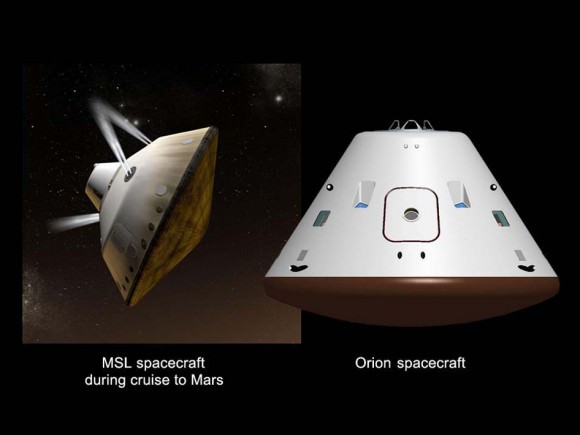
Hassler explained that RAD measures two types of radiation that pose health risks to astronauts. First, the steady stream of low dose galactic cosmic rays (GCRs), and second the short-term and unpredictable exposures to solar energetic particles (SEPs) arising from solar flares and coronal mass ejections (CME’s).
Radiation exposure is known to increase a person’s risk of suffering fatal cancer.
Exposure is measured in units of Sievert (Sv) or milliSievert (one one-thousandth Sv). Being exposed to a dose of 1 Sievert (Sv) over time results in a five percent increased risk of developing cancer.
NASA’s current regulations limit the potential for increased cancer risk to 3 percent for astronauts currently working on the ISS in low-Earth orbit.
RAD determined that the Curiosity rover was exposed to an average of 1.8 milliSieverts per day during the 8.5 month cruise to Mars, due mostly to Galactic Cosmic Rays, said Cary Zeitlin, SWRI Principal Scientist for MSL,at the briefing. “Solar particles only accounted for about 3 to 5 percent of that.”
During a typical 6 month cruise to Mars the astronaut crews would be exposed to 330 millisieverts. That is more than 3 times the typical 6 month exposure of astronauts aboard the ISS which amounts to about 100 millisieverts. See graphic above.
“The 360 day interplanetary round trip exposure would be 660 millisieverts based on chemical propulsion methods,” Zeitlin told Universe Today. “A 500 day mission would increase that to 900 millisieverts.”
By comparison, the average annual exposure for a typical person in the US from all radiation sources is less than 10 millisieverts.
The Earth’s magnetic field provides partial radiation shielding for the ISS astronauts living in low-Earth orbit.
“In terms of accumulated dose, it’s like getting a whole-body CT scan once every five or six days,” says Zeitlin.
And that round trip dose of 660 millisieverts doesn’t even include the astronauts surface stay on Mars – which would significantly raise the total exposure count. But luckily for the crew the surface radiation is less.
“The radiation environment on the surface of Mars is about half that in deep space since its modified by the atmosphere,” Hassler told Universe Today. “We will publish the surface data in a few months.”
NASA will need to decide whether to reassess the acceptable career limits for astronauts exposure to radiation from galactic cosmic rays and solar particle events during long duration deep space journeys.
Panoramic view of Yellowknife Bay basin back dropped by Mount Sharp shows the location of the first two drill sites – John Klein & Cumberland – targeted by NASA’s Curiosity Mars rover and the RAD radiation detector which took the first deep space measurements of harmful space radiation during the cruise phase to Mars in 2011 and 2012 . Curiosity accomplished historic 1st drilling into Martian rock at John Klein outcrop on Feb 8, 2013 (Sol 182) near where the robotic arm is touching the surface. This week the rover scooted about 9 feet to the right to Cumberland (right of center) for 2nd drill campaign on May 19, 2013 (Sol 279). Credit: NASA/JPL-Caltech/Ken Kremer – kenkremer.com/Marco Di Lorenzo
And don’t forget to “Send Your Name to Mars” aboard NASA’s MAVEN orbiter- details here. Deadline: July 1, 2013
…………….
Learn more about Conjunctions, Mars, Curiosity, Opportunity, MAVEN, LADEE and NASA missions at Ken’s upcoming lecture presentations
June 4: “Send your Name to Mars on MAVEN” and “CIBER Astro Sat, LADEE Lunar & Antares Rocket Launches from Virginia”; Rodeway Inn, Chincoteague, VA, 8:30 PM
June 11: “Send your Name to Mars on MAVEN” and “LADEE Lunar & Antares Rocket Launches from Virginia”; NJ State Museum Planetarium and Amateur Astronomers Association of Princeton (AAAP), Trenton, NJ, 730 PM.
June 12: “Send your Name to Mars on MAVEN” and “LADEE Lunar & Antares Rocket Launches from Virginia”; Franklin Institute and Rittenhouse Astronomical Society, Philadelphia, PA, 8 PM.
